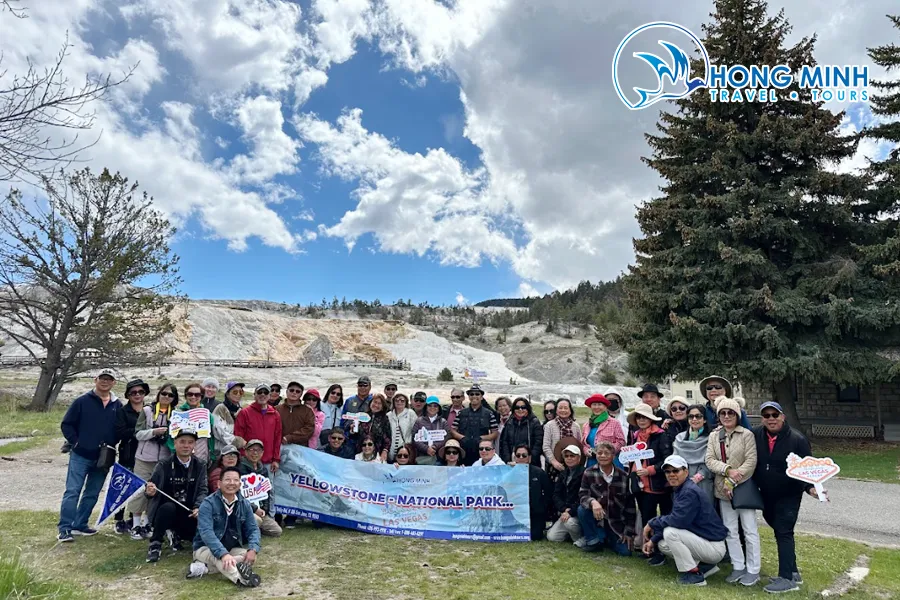Idaho, a northwestern U.S. state known for its rugged landscapes and rich biodiversity, is not only a haven for adventure travelers but also an ideal destination for wildlife photographers, especially those passionate about capturing moose. With an impressive moose population and diverse habitats, Idaho offers countless opportunities to record stunning moments of these magnificent creatures in their natural environment.
Explore Moose World at Yellowstone Bear World
Yellowstone Bear World, located near Yellowstone National Park, is a unique wildlife park where visitors can experience the North American animal world in an authentic and close-up way. Despite its name, “Yellowstone Bear World,” the park is also home to many other wildlife species, including Rocky Mountain moose. This is an excellent starting point for your moose photography journey in Idaho, especially if you want the chance to observe them in a safe and controlled environment.
At Yellowstone Bear World, you can drive through natural habitat areas where moose leisurely graze, roam, and interact with their surroundings. This provides fantastic opportunities for close-up moose photography from your vehicle without disturbing their wild lives. The park is particularly beneficial for beginner photographers or those who want beautiful photos without hiking or searching in vast wilderness areas.

Yellowstone National Park and Surrounding Areas
Yellowstone National Park, while famous for its geysers and geothermal landscapes, is also a vital habitat for moose. The West Yellowstone area of Montana, the park’s west entrance, is an ideal base for those seeking to explore moose in a more wild and natural environment. From West Yellowstone, you can easily access areas of Yellowstone Park, as well as nearby regions in Idaho where moose are frequently seen.
Island Park, Idaho, just southwest of West Yellowstone, is another popular destination for moose viewing. With vast meadows, dense forests, and a rich river and lake system, Island Park provides an ideal habitat for moose. You can drive along Highway 20 or explore trails in the area to search for moose, especially in the early morning or late evening when they are most active.
Wildlife Refuges and National Forests
Beyond Yellowstone and its surroundings, Idaho boasts numerous wildlife refuges and national forests that are home to moose. Caribou-Targhee National Forest, spanning the Idaho-Wyoming border, is a prime example. This vast forest encompasses diverse habitats, from pine and spruce forests to alpine meadows and wetlands, attracting a significant moose population.
Camas National Wildlife Refuge, located in northwestern Idaho, is also a noteworthy destination. This refuge was established to protect habitats for waterfowl and other wildlife, including moose. In the fall, hundreds of moose congregate at this refuge to prepare for winter, creating an impressive spectacle and excellent photo opportunities.
Tips for Effective Moose Photography
To capture impressive moose photos, you need careful preparation and a suitable strategy. Here are some helpful tips:
- Timing: The best times for moose photography are early morning or late evening when the light is soft and animals are more active. Fall, especially the moose rutting season, is ideal for witnessing unique behaviors and photographing bulls with impressive antlers.
- Location: Research areas with a high likelihood of moose presence beforehand, using maps and information from local or online sources. Visitor centers and park rangers in national parks and forests can provide valuable insights into the best locations and times for moose sightings.
- Equipment: A telephoto lens is indispensable for wildlife photography from a distance. A tripod helps stabilize your camera and allows you to take sharper photos, especially in low light conditions.
- Patience and Observation: Wildlife photography requires patience and good observation skills. Spend time observing your surroundings, listening for sounds, and looking for moose signs like tracks, droppings, or rustling in the woods.
- Safety and Respect: Always maintain a safe distance from moose and other wildlife. Never feed them or attempt to approach too closely, as this can be dangerous for both you and the animals. Respect their natural habitat and adhere to park or refuge regulations.

Conclusion
Idaho is a fantastic destination for anyone passionate about moose photography. From wildlife parks like Yellowstone Bear World to vast natural areas like Yellowstone National Park and Caribou-Targhee National Forest, there are countless opportunities to discover and capture the beauty of these magnificent animals. With thorough preparation, patience, and respect for nature, you are sure to have memorable moose photography experiences in Idaho and bring home amazing shots.